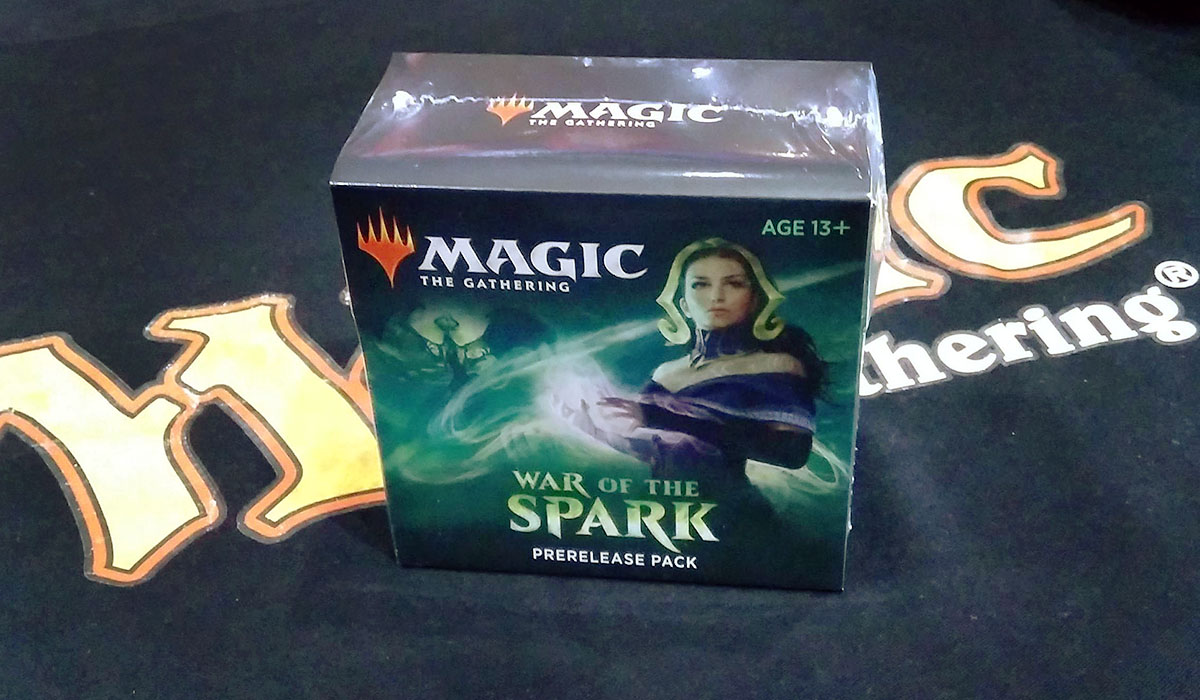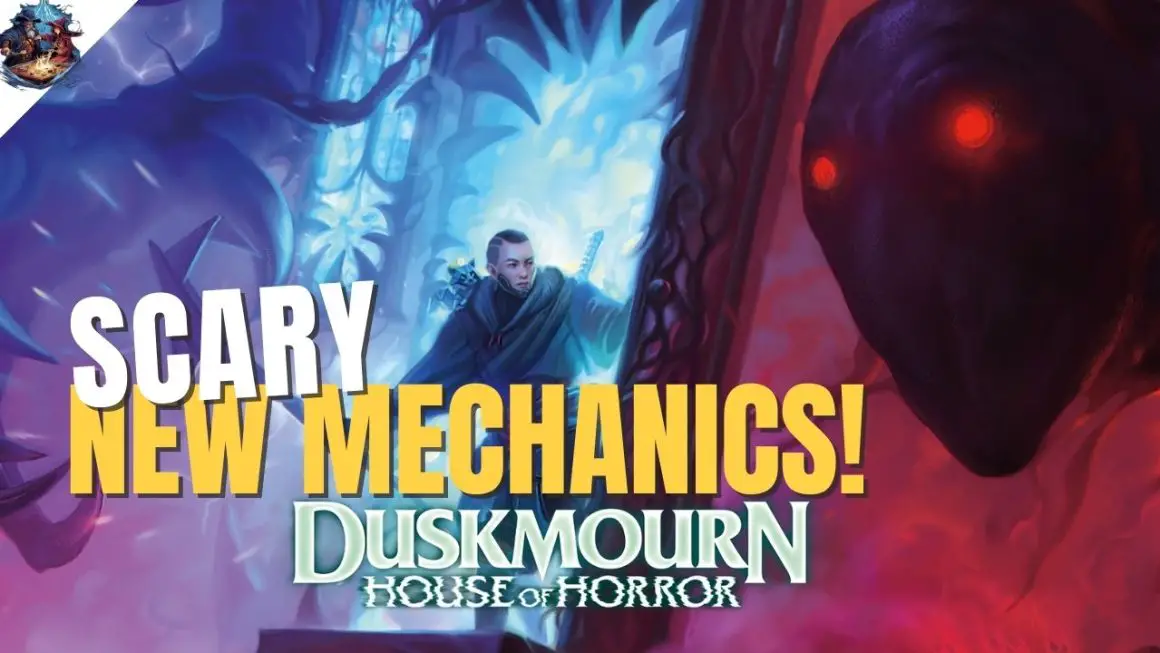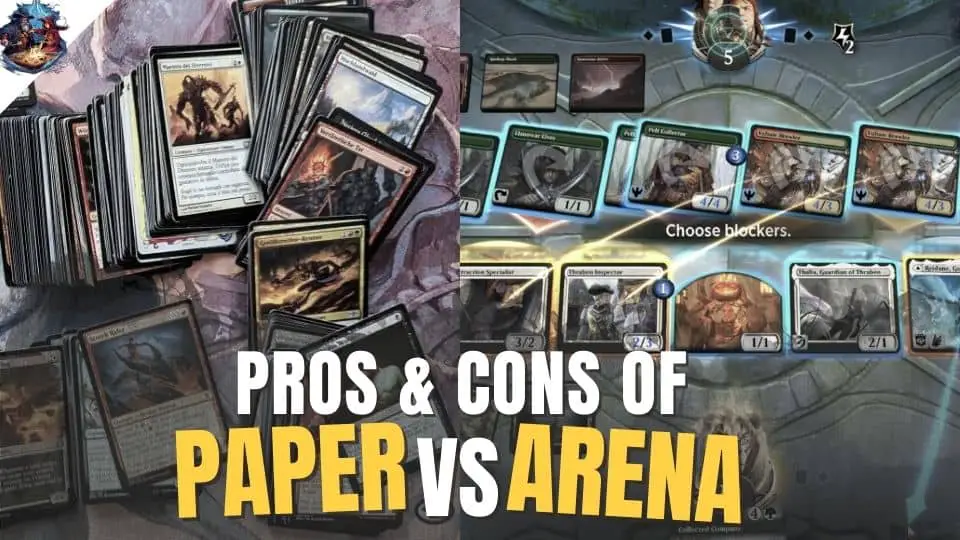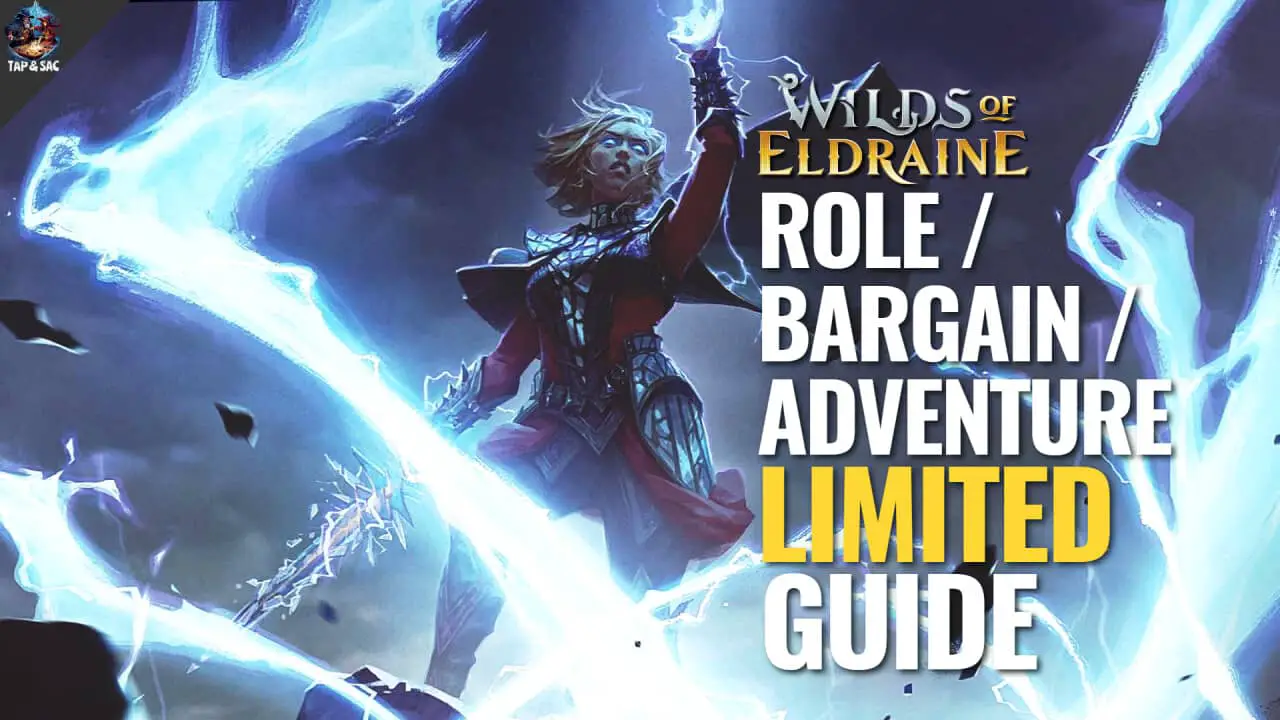The Sealed format falls under the Limited banner, and its name comes from the fact that players do not know what cards they’re going into their deck. Each player gets 6 sealed draft booster packs to build their deck. Right now, all MTG Prerelease events are done using the Sealed format.
Phase 1: What is a Prerelease Event and How Do You Play Sealed?
Basically put, a Prerelease is an event hosted by your local game store to allow players to experience the upcoming set a week before it officially launches. This gives players an opportunity to play with new cards, using the Sealed format, from the set and figure out which potential deck builds function well and which don’t.

A Prerelease event involves players opening a Sealed Prerelease kit, which contains 6 Draft Booster packs of the current set (or a mix, see addendum 1) along with a foil promo Rare or Mythic card from the set with a golden date stamp just above the set symbol.
Your goal is then to assemble a deck of 40 cards from the cards you’ve opened (adding on Basic Lands from either the store or your personal collection) then fight your way to the top!
One key rule is that your Prerelease deck can only contain cards that were opened from your Prerelease kit! You can’t open two kits, mash both of them together and then play with that deck. You also can’t use cards from other sets that didn’t begin in your Prerelease kit. The only exception to these rules are Basic Lands, which can come from anywhere and any set.
Phase 2: Constructing your Sealed Deck
Most players, upon opening their Prerelease kit, are immediately spoilt for choice (or seriously confused) on what kind of a deck to build. When you have to narrow 85 cards down to around 25, it makes choosing your colours and deck strategy quite difficult.

The insert that Wizards of the Coast often includes in their Prerelease kits recommends players to stick to the “Golden Ratio” of 22 to 24 non-Land cards, of which roughly 60% are Creatures, along with 16 to 18 lands to give you a deck of 40 cards. This “Golden Ratio” allows for an optimal number of lands for every hand of 7 cards that you draw, so you won’t get flooded nor have a shortage of Lands.
However, this optimal value of 40 cards is quite arbitrary, and really varies from set to set, with some Prerelease environments favouring decks with slightly higher deck sizes of around 42 to 46 cards, whilst others favouring a higher number of Lands in the deck. This is often due to certain archetypes being present within these sealed environments, causing decks to warp to better suit these play styles.
Popular examples of such deck warping can be seen in the Prereleases of sets like Battle For Zendikar where Landfall, an ability that triggers when a land enters the battlefield under your control, caused decks to favour a higher Land count to facilitate the triggering of this ability, or in Throne of Eldraine, where mill cards like Merfolk Secretkeeper and Folio of Fancies could easily drain a 40 card deck of its resources by hurling them into the graveyard.
Phase 3: The Mana Curve and Deck Size
“So, isn’t running a 60 card deck more effective than running a 40 card one since I can fit more colours and spells into it?” I hear you ask.

Having a larger deck size does allow you to play more cards and fit in more spells to boost your game plan, but it also comes at a cost of deck efficiency and quality.
As you play more Lands and more colours of cards, the overall quality of your deck goes down. It becomes more likely for you to miss your Land drops due to keeping a hand full of spells but too few Lands, or get colour ‘screwed’ because you couldn’t play that one Red card when you had a board full of Islands and Swamps.
Ideally, running 1 or 2 colours during Prerelease is the most optimal play style, (or not, see Addendum 2). And keeping your deck count as close to 40 as possible allows you to have access to your lands and spells without skimping on card quality and overall deck efficiency.
“So what is this Mana Curve thing that I hear everyone talking about?”
Good Question! The Mana Curve basically represents the number of cards of a certain mana cost that you should play in your deck. Typically, this depends on what kind of a deck you’re playing.

For more Mid-range tempo decks, their goal is to maximise the usage of their Mana to play cards, aiming for value trades and hoping to out-value their opponents in the long game. Thus, their curve tends to peak at around the 3 to 4 Mana mark, with some 5 or 6+ Mana-costing cards as late game “bombs.”
For more Aggro/Aggressive decks, their goal is to smash their opponents down quick and whittle their life total with fast and aggressive plays. This deck’s curve tends to be high in 2 and 3-Mana drops, with less focus on the higher end of the mana curve, allowing them to play out more threats each turn.
Most deck archetypes in any Sealed/Limited format will be in line with the aforementioned key strategies, so they’re often reference points for players to construct their decks from.
Phase 4: Archetype, Schnarchetype
Well, you can’t just get away with hurling a bunch of cards together and calling it a day! You’ll need a game plan. Something that works towards your goal of smashing your opponent’s face in!
Typically, cards in most sets will give you hints as to the strategies surrounding them, and what potential synergies you can construct as you develop your sealed deck.
Multicolour cards like Primal Empathy from Ikoria hint at the strategies they support very clearly, whilst also bringing your attention to the key cards from their constituent colours that best support their archetype. (Primal Empathy demands the +1/+1 counters archetype supported by Green as well as the Big Creature archetype supported by Blue)
As new players, venturing into a completely alien environment with cards that even seasoned players have never seen before, finding an archetype and sticking to it can be quite the challenge.
My Top Tips to Identifying Archetypes in Sealed/Draft:

1. Look at the subtypes of creature cards. Cards with similar subtypes tend to synergise better among themselves than with cards of other subtypes (e.g Paired Tactician for the Warrior subtype in Zendikar Rising Limited)
2. Watch out for keywords present in the set. Is the keyword Lifelink present on a Black/White card? Chances are that “life gain matters” is a potential archetype for that format.
3. Seek out value-generating “engines” in the card pool. These are usually cards that offer repeatable value when played, either in both the long term or short term for doing certain actions. (Felidar Retreat offers great value for just playing a Land! A 2/2 or a buffed-up board? Sign me up!)
4. Read up on your Gold/multicolour cards! These are usually the key build-arounds for multicolour decks.
5. If all fails and you really can’t tell what’s going on, sticking to mono colour may actually help if your card pool is good enough! Certain colours may lack the ability to deal direct damage to creatures/players, or struggle to draw cards to refill their hand, but are still significantly more consistent than a three-colour deck with four contrasting archetypes mashed together.
Phase 5: Splish Splash What is this, Trash?
You’ll often hear the phrase “ splashing” when Sealed or Draft comes up over casual talk at the dinner table.
“Splashing a colour” means adding a colour outside of what you’re already playing, usually to supplement your deck with off-colour cards that help improve your deck’s overall quality.
As a seasoned MTG Player, I must admit, splashing can make or break an entire Sealed deck. If your current deck is severely lacking in a particular aspect, splashing another colour can help compensate.

On the contrary, splashing a colour can also spell death for your mana base, as you’ll need to dilute it with Lands of varying colours to suit the coloured mana costs of your cards.
Ideally, you wouldn’t want to go over 3 colours in Sealed (again, see addendum 2) so as to not overly dilute your Mana Base with different colours of Lands, and end up not being able to cast the cards in your hand each turn.
However, the problem of a diluted Mana Base can be alleviated through the use of Mana fixing cards, which can either tap for Mana of multiple/any colour OR help transform Mana of one colour (or colourless) into that of another colour. (You can read more about Dual Lands and other Lands here.) This may not be the most effective method of generating mana, but it certainly helps when you’re in a pinch.
End Step
Ultimately, there can never be a definitive guide to constructing a Sealed deck, save for vague and general tips. This is due to the volatile nature of the Sealed format, especially since different sets give themselves to different limited environments, which hence support varying colour combinations and strategies.
However, Prerelease offers new players a level playing field to fight on, since most players are seeing these cards for the first time.

Remember, if you don’t know what a card does, just ask! The rules at Prerelease are much more relaxed than those at regular Friday Night Magic tournaments, so don’t feel pressured to speak up!
Last but not least, have fun and here’s hoping your sealed pool’s something to bewilder!
Addendum 1
Addendum 1: Certain prerelease kits, such as those of the Khans of Tarkir block (2014-15) and Guilds of Ravinca block (2018-19) contain what’s known as “seeded packs,” which contain cards meant to support a certain colour pair/archetype from the beginning.
Prerelease kits from before Dominaria (2018) that were part of two-set blocks would often have 6 packs of the first set at its Prerelease, and 2 packs of the first set along with 4 packs of the second set during the second set’s Prerelease.
Addendum 2:
Playing 3 colour can be quite difficult in 2-colour focused sets like Throne of Eldraine (2019) and Eldritch Moon (2016). However, in sets like Guilds of Ravnica block (2018-19) and Shards of Alara block (2008) where multicolour cards mattered more, Mana-fixing sources were also more readily available, allowing players to diversify their deck into three or more colours quite easily.
Simultaneously, the 5-colour archetype was also sparsely supported in limited environments across Magic’s History. The most recent example of which was the Guildgate archetype in Ravnica Allegiance (2019), supported by key cards like Archway Angel, Gatebreaker Ram and Gateway Colossus that could actually hold it’s own if you managed to open the right cards.




